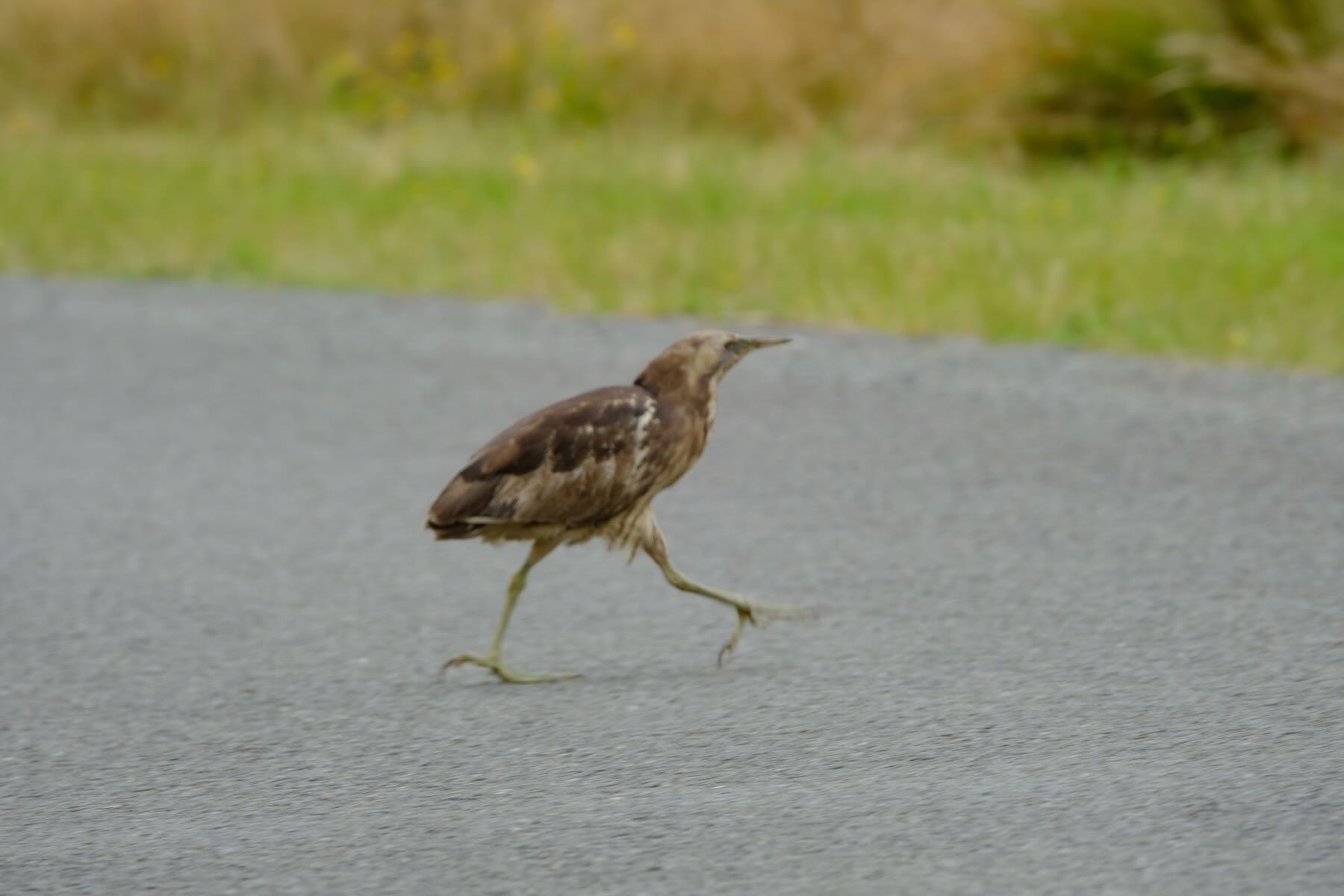
A local resident told me recently she’d spotted a Bittern on one Strathnaver wetland, one of 3 areas in Strathnaver where the very rare Bitterns are known to breed locally.
Update, 07 February 2023, a Bittern expert who visited recently advised that at least one of the areas doesn’t have the right kind of foliage for breeding. The Bitterns do forage in that spot though.

Bittern breeding season falls between August and May. They lay between 3 and 6 eggs sometime between August and December. The eggs hatch after about 25 days and then fledging is complete after another 49 days or so.
Dog owners: please don’t let your dogs loose in or around the Strathnaver ponds and lakes.
While you may not see a Bittern you may hear its mating call around dawn or dusk. Australasian Bittern Survey (Birdlife Australia) tells us:
Very soon, male Australasian Bitterns will begin establishing their territories in freshwater habitats comprising dense reedbeds, and producing a distinct, low frequency call referred to as a ‘boom’. This boom both attracts females and intimidates rivals.
Further — Keep An ear Out For Australasian Bitterns At Your Local Wetland — Birdlife Action Network:
The best way to find a bittern is to listen for their booming calls during the breeding season. Male bitterns have a distinct, low booming call likened to a foghorn that they repeat several times in succession, calling most frequently at dawn and dusk during the spring summer.
New Zealand Birds Online fills in more detail — Australasian bittern | Matuku-hūrepo
Voice: male bitterns produce a sequence of distinctive ‘wooom’ calls known as ‘booms’. Each call sequence consists of several individual booms, ranging from 1-10 booms per sequence, with a mean of 3. These sequences are repeated at regular intervals that appear consistent to individual birds.
While I haven’t yet been lucky enough to spot a Bittern myself (update, I saw on in February 2023), I did hear its call one night a year or two back. What a treat!